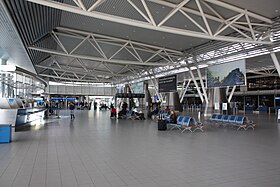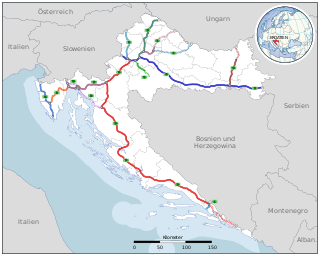
Transport in Croatia relies on several main modes, including transport by car, train, ship and plane. Road transport incorporates a comprehensive network of state, county and local routes augmented by a network of highways for long-distance travelling. Water transport can be divided into sea, based on the ports of Rijeka, Ploče, Split and Zadar, and river transport, based on Sava, Danube and, to a lesser extent, Drava. Croatia has 9 international airports and several airlines, of which the most notable are Croatia Airlines and Trade Air. Rail network is fairly developed but regarding inter-city transport, bus tends to be far more common than the rail.

Transport in Colombia is regulated by the Ministry of Transport.
The transport system of Finland is well-developed. Factors affecting traffic include the sparse population and long distance between towns and cities, and the cold climate with waterways freezing and land covered in snow for winter.
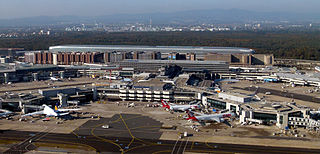
As a densely populated country in a central location in Europe and with a developed economy, Germany has a dense transport infrastructure.
Transport in Hungary relies on several main modes, including transport by road, rail, air and water.

Transport in Pakistan is extensive and varied, and serves a population of over 212.2 million people. In recent years, new national highways have been built, with the addition of motorways which have improved trade and logistics within the country. Pakistan's rail network owned by Pakistan Railways is also undergoing expansion in recent years. Airports and seaports have been built with the addition of foreign and domestic funding.
Transportation infrastructure in Romania is the property of the state, and is administered by the Ministry of Transport and Infrastructure, Constructions and Tourism, except when operated as a concession, in which case the concessions are made by the Ministry of Administration and Interior.
Transportation in South Korea is provided by extensive networks of railways, highways, bus routes, ferry services and air routes that traverse the country. South Korea is the third country in the world to operate a maglev train, which is an automatically run people mover at Incheon International Airport.
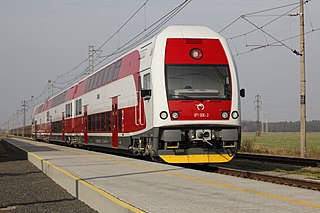
Transport in Slovakia is possible by rail, road, air, or rivers. Slovakia is a developed Central European country with a well-developed rail network (3,662 km) and a highway system (854 km). The main international airport is the M. R. Štefánik Airport in the capital, Bratislava. The most important waterway is the river Danube used by passenger, cargo, and freight ships. The two most important harbours in Slovakia is Komarno harbour and Bratislava harbour.

The location at the junction of the Mediterranean, the Alps, the Dinarides and the Pannonian Plain and the area being traversed by major rivers have been the reasons for the intersection of the main transport routes in Slovenia. Their course was established already in Antiquity. A particular geographic advantage in recent times has been the location of the intersection of the Pan-European transport corridors V and X in the country. This gives it a special position in the European social, economic and cultural integration and restructuring.

Switzerland has a dense network of roads and railways. The Swiss public transport network has a total length of 24,500 kilometers and has more than 2600 stations and stops.

Transport in the United Kingdom is facilitated by road, air, rail, and water networks. A radial road network totals 29,145 miles (46,904 km) of main roads, 2,173 miles (3,497 km) of motorways and 213,750 miles (344,000 km) of paved roads. The National Rail network of 10,072 route miles (16,116 km) in Great Britain and 189 route miles in Northern Ireland carries over 18,000 passenger and 1,000 freight trains daily. Urban rail networks exist in Belfast, Birmingham, Cardiff, Edinburgh, Glasgow, Liverpool, London, Manchester and Newcastle. There are many regional and international airports, with Heathrow Airport in London being one of the top ten busiest in the world. The UK also has a network of ports which received over 486 million tons of goods in 2019. Transport is the largest source of greenhouse gas emissions by the United Kingdom.

Transport in Ukraine includes ground transportation, water, air transportation, and pipelines. The transportation sector accounts for roughly 11% of the country's gross domestic product and 7% of total employment.
Transport in Serbia includes transport by road, rail, air and water. Road transport incorporates a comprehensive network of major and minor roads. Rail transport is fairly developed, although dual track and electrification are not very common. Water transport revolves around river transport while air transport around country's three main international airports.
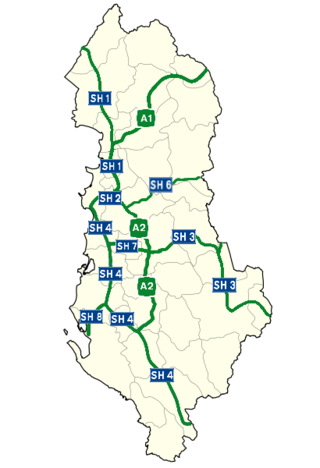
Transport in Albania consists of transport by land, water and air, which are predominantly under the supervision of the Ministry of Infrastructure of Albania. The development and improvement of the transport in the country remains among the most important priorities of the Government of Albania.
Bunavad was the first national airline of Bulgaria. The airline was conceived in late 1926, operated scheduled services between major Bulgarian cities from October 1927 and closed in 1930.

The Bulgarian Black Sea Coast, also known as the Bulgarian Riviera, covers the entire eastern bound of Bulgaria stretching from the Romanian Black Sea resorts in the north to European Turkey in the south, along 378 km of coastline. White and golden sandy beaches occupy approximately 130 km of the 378 km long coast. The region is an important center of tourism during the summer season (May–October), drawing millions of foreign and local tourists alike and constituting one of the country's most popular tourist destinations. Prior to 1989 the Bulgarian Black Sea coast was internationally known as the Red Riviera. Since the fall of the Iron Curtain, however, its nickname has been changed to the Bulgarian Riviera.

Plovdiv Airport is the airport of the second largest city in Bulgaria, Plovdiv and is the country's 4th busiest behind Sofia, Burgas and Varna. It may be referred to as Plovdiv Krumovo Airport, after a small village located 6 km south-east away from the city on the main Plovdiv-Asenovgrad highway.
The city of Karachi is a major transport hub of Pakistan. The Karachi port and airport are major gateways to Pakistan. The Karachi Railway stations transports the major part of Pakistan's trade with other countries.

The Corridor VIII is one of the Pan-European corridors. It comprises both road and rail routes. Both commence on the Italian Adriatic coast at Bari or Brindisi, with a ferry crossing to Durrës in Albania. From there the routes cross the southern Balkans into Bulgaria and thence to Varna, on the Bulgarian Black Sea coast. The road corridor follows the route: Tirana/Durrës/Vlorë – Elbasan – Skopje – Pernik – Sofia – Plovdiv – Burgas – Varna. Although as yet incomplete, it is broadly paralleled by the rail route: Durrës/Vlorë-Lin-Radožda-Kičevo-Skopje-Kumanovo-Beljakovtse-Kriva Palanka-Gyueševo-Sofija-Burgas-Varna.

